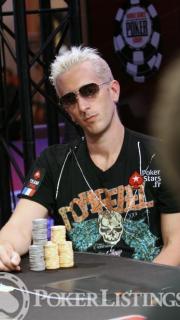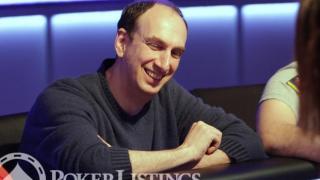The Bottom Line
Blackjack is a game of skill. By learning to count cards a player can gain
the edge over the casino. Speed count is the easiest counting method developed
to date. In two days you can learn how to get the mathematical edge over the
casino. It is 70-95 percent as effective as the High/Low and KO counts. It can
be used in blackjack games with any number of decks. If you are a basic strategy
player looking to take the next step to gain the edge then speed count is for
you.
Pros
- Easiest Blackjack card counting method that you can learn.
- Gives you a mathematically marked cards verifiable edge over the casino.
- Can be learned in two days, not months or years.
- Speed Cout Book Available
- Course is on DVD
Cons
- Limited number of classes available around the country.
Description
- The full two day course teaches you the seven elements needed to get the edge over the casino.
- Speed Count is the easier to learn than other card counting metohd.
- Speed Count gives you 70-95 percent of the power of other counting methods such as Hi/Lo and KO.
- Utilizes a running count that does not require cancellation, division or multiplication.
- Teaches you how to get more comps at less risk.
- New optimal basic strategy (OBS) that provides built-in camouflage.
- Learn the count by actually playing in simulated casino sessions at the table.
- Predetermined bet sizes based on count make your decisions automatic.
- Teaches you money management, bankroll considerations for all levels of play
Guide Review - Golden Touch Blackjack Speed Count Course
I attended the two day course and was surprised with the ease in learning
the speed count method. In the past I have studied the Hi/Lo count but had
difficulty utilizing it in the casino. I switched to the KO method but found
that I could not sustain it for long juice cards. I learned the speed count in two days and
was able to easily use it at the casino. The course is very hands on. You learn
by playing and practicing at the blackjack table with other students in a
simulated game situation. If you can learn basic strategy then you can learn the
speed count.
The course also taught about the money management principals and bankroll
considerations needed to succeed. It explained how to utilize the comp system to
add to get even more from the casino. Because of the built in camouflage it is
possible to play without even being detected as an advantage player.
The speed count was independently tested by two of the country’s top mathematicians who test casino games. Both verified that utilizing the speed count does give the player and advantage.
Using card counting can give you the edge when playing Blackjack but there are no guarantees. Card counters do not win every time they play. This course gave the students realistic information about the expectations of playing blackjack as well as the risks involved.
If you are serious about Blackjack this is the course for you.
If you are unable to attend a Speed Count course, the complete information is available in the Golden Touch Blackjack Revolution book and also on The Speed Count DVD.
The speed count was independently tested by two of the country’s top mathematicians who test casino games. Both verified that utilizing the speed count does give the player and advantage.
Using card counting can give you the edge when playing Blackjack but there are no guarantees. Card counters do not win every time they play. This course gave the students realistic information about the expectations of playing blackjack as well as the risks involved.
If you are serious about Blackjack this is the course for you.
If you are unable to attend a Speed Count course, the complete information is available in the Golden Touch Blackjack Revolution book and also on The Speed Count DVD.




